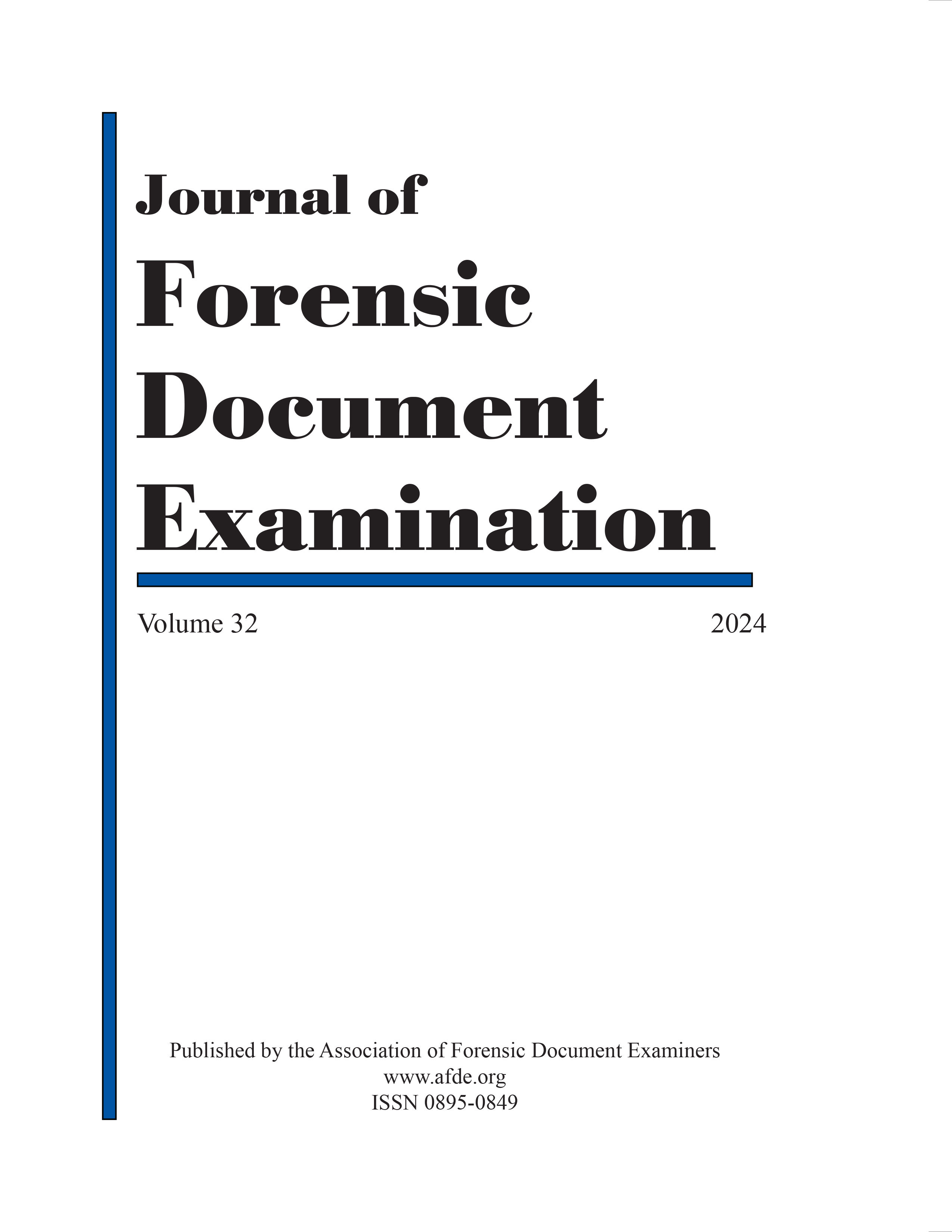Determination of the Age of Gel Pen Inks on Handwritten Documents using Gas Chromatography-Mass Spectrometry and Chemometrics
DOI:
https://doi.org/10.31974/jfde32-17-24Keywords:
determination of the age of ink, gel pen inks, dating of pen inks, documents, questioned documents, determination of the age of documents, dating of documents, gas chromatography-mass spectroscopy, the effect of substrate, liklihood ratioAbstract
Background: The accurate determination of age of ink used in the documents related to forensic cases is often submitted to forensic document examiners. Determining the age of ink refers to assessing the most probable time when the ink was used to write on paper. It may become tedious due to the great variety of writing inks available in the market and due to the complexity of chemical processes that occur over time after the deposition of the ink onto the paper. Limited work is available concerning non-ballpoint pen inks. Thus, the study addressed the determination of the age of the writings made using gel pens of 4 different colour inks by studying their volatile components by employing GC-MS. The effects of the storage conditions and different substrates (paper) on the ageing of ink were also assessed.
Results: More than 70% drop in the peak area was observed initially, which increased with time and the fall was more or less stable up to 60 days, after which the peaks disappeared. Slight effect of the type of substrate and storage condition was observed. The results were backed with Karl Pearson’s correlation method suggesting comparability between the samples stored in closed and open storage conditions.
Conclusion: GC-MS is suitable for studying the solvent components of gel pen inks for the determination of age of ink. The methodology used in this study provided reliable results for writings stored for up to 75 days.
Published
How to Cite
Issue
Section
License
©2024 Journal of Forensic Document Examination (JFDE). All rights reserved. Written permission must be obtained from the editor of the JFDE at journal.jfde@gmail.com before copying, transmitting, storing, printing, or using for any other means. Authors may copy their article for educational and research purposes exclusively, retain the research data, and receive proper attribution and credit for their work.

